GeForce RTX 3060 Ti is one of the most affordable and powerful graphics cards in the RTX 30 series from Nvidia. The card is positioned below the RTX 3070 and is a direct competitor of AMD Radeon RX 5700 XT considering that both the cards fall in the same price bracket. Technically, RTX 3060 Ti is a direct replacement for the RTX 2060 and RTX 2060 SUPER if we only look at the price. However, RTX 3060 Ti is a much more powerful card. If we talk about performance, it competes directly with the RTX 2080 SUPER, a much pricier card and the second most powerful card in the RTX 20 series, positioned just below the RTX 2080 Ti. If you want to know how the RTX 3060 Ti compares against the RTX 2080 SUPER and RX 5700 XT, I am making a very precise and informative comparison between these cards, taking into account all the important parameters.
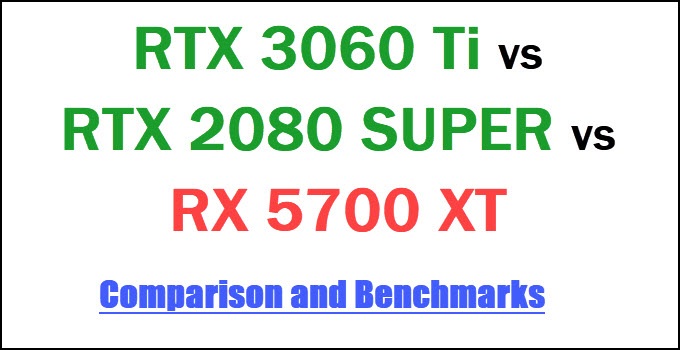
RTX 3060 Ti vs RTX 2080 SUPER vs RX 5700 XT
Below is the comparison between RTX 3060 Ti, RTX 2080 SUPER, and RX 5700 XT graphics cards based on their specifications, performance, pricing, power consumption, and features.
GPU Architecture
RTX 3060 Ti is the newest of all three cards and is built on Nvidia’s latest Ampere GPU architecture on an 8nm manufacturing process from Samsung. The card uses a cut-down version of the GA104 chip and comes with 4864 CUDA Cores, 38 RT Cores, and 152 Tensor Cores. RTX 2080 SUPER uses Turing GPU architecture, uses a TU104 chip, and is built on the 12nm fabrication process. The card comes with 3072 CUDA Cores, 48 RT Cores, and 384 Tensor Cores. It should be noted that RTX 3060 Ti uses 2nd generation RT Cores and 3rd generation Tensor Cores while the RTX 2080 SUPER uses 1st generation RT Cores and 2nd generation Tensor Cores. On the other hand, Radeon RX 5700 XT is an AMD card built on the RDNA architecture on 7nm manufacturing process and uses the Navi 10 GPU chip. The card comes with 2560 Stream Processors and does not have any RT and Tensor Cores for Real-Time Ray Tracing and Artificial Intelligence (AI) processing workloads.
| RTX 3060 Ti | RTX 2080 SUPER | RX 5700 XT | |
| GPU Chip | GA104 | TU104 | Navi 10 |
| GPU Architecture | Ampere | Turing | RDNA |
| Fabrication Process | 8nm | 12nm | 7nm |
| CUDA Cores/Stream Processors | 4864 CUDA Cores | 3072 CUDA Cores | 2560 Stream Processors |
| RT Cores | 38 | 48 | NA |
| Tensor Cores | 152 | 384 | NA |
Video Memory [VRAM]
All these graphics cards come with 8GB GDDR6 memory having a 256-bit bus interface. However, RTX 2080 SUPER has a slightly faster memory speed of 15.5 Gbps while the other two cards’ video memory operates at 14 Gbps. Because of the faster memory speed of RTX 2080 SUPER, it delivers a higher memory bandwidth of 496 GB/s as opposed to 448 GB/s delivered by RTX 3060 Ti and RX 5700 XT. So, in the VRAM department, RTX 2080 SUPER is slightly better, but it won’t make much of a difference practically in games and other applications in reality.
| RTX 3060 Ti | RTX 2080 SUPER | RX 5700 XT | |
| Memory Size | 8GB GDDR6 | 8GB GDDR6 | 8GB GDDR6 |
| Memory Interface | 256-bit | 256-bit | 256-bit |
| Memory Speed | 14 Gbps | 15.5 Gbps | 14 Gbps |
| Memory Bandwidth | 448 GB/s | 496 GB/s | 448 GB/s |
Features
All these graphics cards support DirectX 12, OpenGL 4.6, Vulkan, G-Sync/FreeSync, and are VR-ready cards. RTX 3060 Ti and RX 5700 XT supports the latest PCI-Express 4.0 interface, while the RTX 2080 SUPER includes the support for PCIe 3.0 only. Here, only the RTX 2080 SUPER supports multi-GPU configuration (SLI) using the With NVIDIA RTX NVLink Bridge. RTX 3060 Ti and RTX 2080 SUPER supports Real-Time Ray Tracing and Deep Learning Super Sampling (DLSS), which the RX 5700 XT lacks.
The features that are exclusive to RTX 3060 Ti include HDMI 2.1 (that supports 8K30, 4K144, Dynamic HDR, and resolutions up to 10K), 5th generation Nvidia Decoder and AV1 codec support, which is a royalty-free and highly efficient codec that can reduce the bandwidth by high stream resolution video by up to 50% compared to H.264. Other features introduced with the RTX 30 series card include RTX IO which reduces game loading time significantly by decompressing game files/data textures in the GPU memory and Nvidia Reflex that helps lower game latency. The RX 5700 XT exclusive features include Radeon Image Sharpening to deliver crisp-looking visuals with virtually no performance impact and FidelityFX.
| RTX 3060 Ti | RTX 2080 SUPER | RX 5700 XT | |
| Bus Interface | PCI Express 4.0 | PCI Express 3.0 | PCI Express 4.0 |
| DirectX | 12 Ultimate | 12 Ultimate | 12 Ultimate |
| OpenGL | 4.6 | 4.6 | 4.6 |
| Vulkan | 1.2 | 1.2 | 1.2 |
| SLI | No | Yes – With NVIDIA RTX NVLink Bridge | No |
| VR Ready | Yes | Yes | Yes |
| G-Sync/FreeSync | G-Sync | G-Sync | FreeSync |
Gaming Performance
Here are the gaming benchmarks of these cards at 1440p and 4K resolution.
1440p Benchmarks
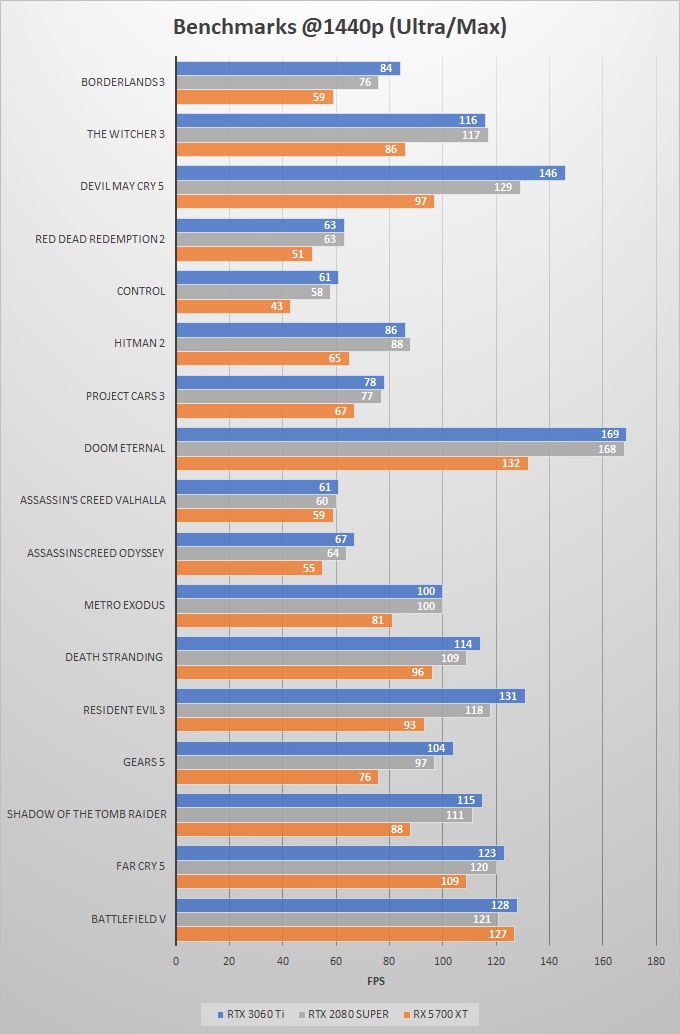
4K Benchmarks

Looking at the above benchmarks, we can clearly see that RTX 3060 Ti is as fast as the RTX 2080 SUPER. RTX 3060 Ti beats RTX 2080 SUPER in almost every game and is around 5% faster on average. RTX 3060 Ti beats the RX 5700 XT hands down in every game and is about 23% faster on average.
Power Consumption
The card having the least power consumption is the RTX 3060 Ti at 200W, while the highest is the RTX 2080 SUPER with a power consumption figure of 250W on paper. RX 5700 XT’s power consumption falls in between the RTX 3060 Ti and RX 5700 XT at 225W.
| RTX 3060 Ti | RTX 2080 SUPER | RX 5700 XT | |
| Power Consumption | 200W | 250W | 225W |
| Recommended PSU | 600W | 650W | 600W |
Pricing and Availability
At the time of launch, the MSRP of RTX 3060 Ti and RX 5700 XT was $399, while the base MSRP of RTX 2080 SUPER is $699, which is significantly higher than the other two. The custom AIB models of these cards may cost a little more, and also, the prices of older cards like RX 5700 XT and RTX 2080 SUPER may have been slashed because of the competition from the new cards. You can check the current prices of these cards from the links given below.
Check RTX 3060 Ti Price on Amazon
Check RTX 2080 SUPER on Amazon
Check RX 5700 XT Price on Amazon
RTX 3060 Ti vs RTX 2080 SUPER vs RX 5700 XT Specifications
| RTX 3060 Ti | RTX 2080 SUPER | RX 5700 XT | |
| GPU Chip | GA104 | TU104 | Navi 10 |
| GPU Architecture | Ampere | Turing | RDNA |
| Fabrication Process | 8nm | 12nm | 7nm |
| CUDA Cores/Stream Processors | 4864 CUDA Cores | 3072 CUDA Cores | 2560 Stream Processors |
| RT Cores | 38 | 48 | NA |
| Tensor Cores | 152 | 384 | NA |
| Memory Size | 8GB GDDR6 | 8GB GDDR6 | 8GB GDDR6 |
| Memory Interface | 256-bit | 256-bit | 256-bit |
| Memory Speed | 14 Gbps | 15.5 Gbps | 14 Gbps |
| Memory Bandwidth | 448 GB/s | 496 GB/s | 448 GB/s |
| Bus Interface | PCI Express 4.0 | PCI Express 3.0 | PCI Express 4.0 |
| DirectX | 12 Ultimate | 12 Ultimate | 12 Ultimate |
| OpenGL | 4.6 | 4.6 | 4.6 |
| Vulkan | 1.2 | 1.2 | 1.2 |
| SLI | No | Yes – With NVIDIA RTX NVLink Bridge | No |
| VR Ready | Yes | Yes | Yes |
| G-Sync/FreeSync | G-Sync | G-Sync | FreeSync |
| Power Consumption | 200W | 250W | 225W |
| Recommended PSU | 600W | 650W | 600W |
See also:
Final Thoughts
If you are looking for a powerful graphics card that offers excellent value and delivers outstanding 1440p gaming performance, then the RTX 3060 Ti is probably the best graphics card right now. The card is also quite capable of 4K gaming, and you can get 60+ FPS in the latest AAA games by lowering down some of the graphics settings depending on the game. RTX 3060 Ti is way cheaper than the RTX 2080 SUPER, and it just decimates the RX 5700 XT in almost every game. The winner here then is clearly the RTX 3060 Ti, and no other card can compete with it at this price point.
(*This post may contain affiliate links, which means I may receive a small commission if you choose to purchase through the links I provide (at no extra cost to you). Thank you for supporting the work I put into this site!)
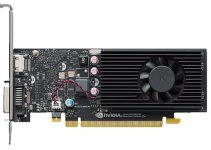
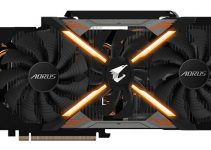
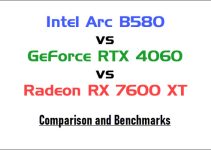
Excellent article as always
Thank You!